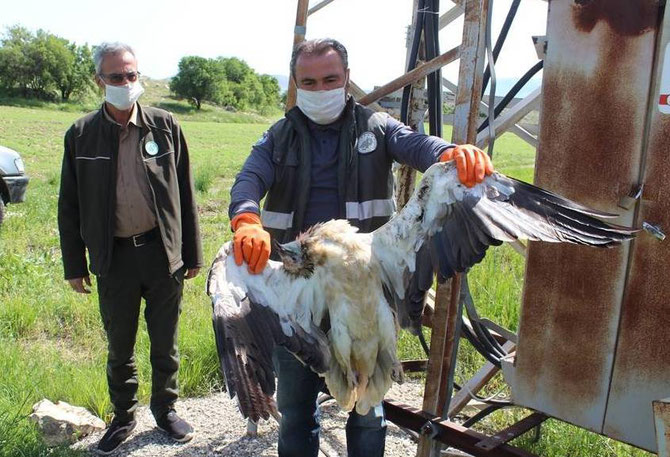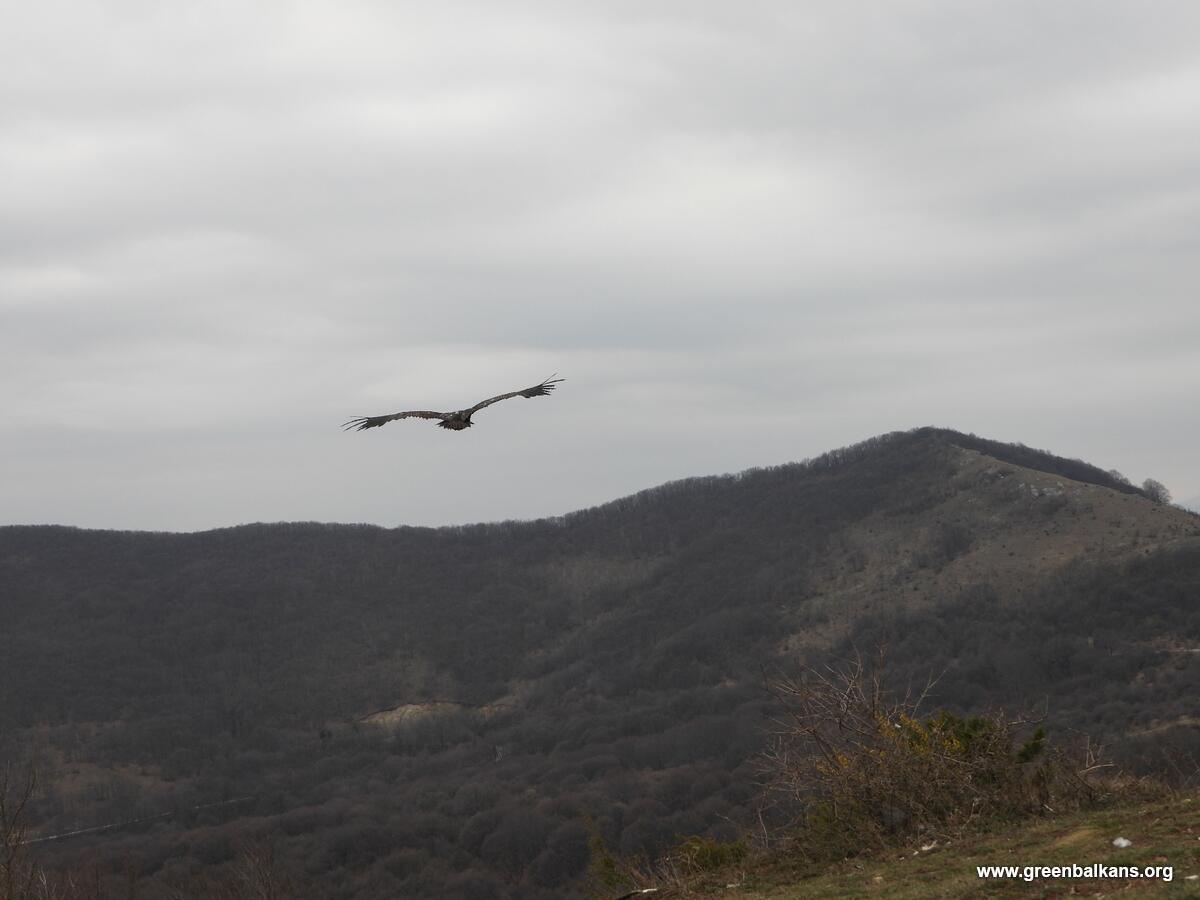
Located at the interface of Asia, Africa and Europe, Turkey is a globally important country for birds, with a total of 512 bird species recorded, and includes some of the main bird migrations routes in Eurasia. However, vultures and other birds face several dangers in the country, including electrocution, which is an often overlooked threat.
The threat of electrocution in Turkey
Hazardous power lines are among the main threats for vultures, raptors and many other bird species in Turkey. Imperial Eagles, Saker Falcons and White Storks are some of the several species that have been killed in the country due to electrocution. Just a few days ago, a marked White Stork from Poland died from electrocution in Turkey. And while no systematic survey of power lines have been done in the country, data coming from some tagged individuals show that mortality due to electrocution, often during migration, impacts many species and individuals, and might be an important mortality factor threatening the demography of those populations
Just last year, at least three Egyptian Vultures died due to electrocution in the country. Detecting electrocuted birds in remote areas is rare and not always possible, as carcasses are either decomposed or consumed by scavengers. In Spain, for example, only 20% of the mortality caused by electrocution is recorded. In most cases, carcasses are found due to GPS transmitters, like in the case of the latest known vulture victim of electrocution in Turkey — Egyptian Vulture Polya.

The Egyptian Vulture Polya hatched in 2017 at the Prague Zoo and was donated to the Egyptian Vulture New LIFE project. She is one of the first Egyptian Vultures released through the delayed release method as part of the restocking programme for the species in Bulgaria, an initiative closely supported by the Vulture Conservation Foundation (VCF). The captive-bred vulture was released in 2018, and shortly after, she headed south, visiting 12 countries across the Balkans, the Middle East and Africa in the past two years. The vulture started her first spring migration from Saudi Arabia in late April 2020 and was moving north fast. However, on 9 May, the project team received the worst signal from her GPS tag, indicating mortality. It seems that at dusk, Polya was looking for a place to roost, and landed on a very dangerous electrical transformer and was immediately electrocuted.
Mitigating the threat of electrocution
The Vulture Multi-species Action Plan (Vulture MsAP), co-developed by the VCF and endorsed by the Convention for Migratory Species, concluded that electricity infrastructure, particularly electrocution and collision, are a a serious but under-estimated threat to vultures.
Pylons and cables without adequate isolation or markers are just one of the many threats that vultures and other birds face daily. Unfortunately, vultures and other birds are not always able to see the wires in front of them, which causes collisions. When flying or landing on dangerous pylons, birds often touch the wires and die as a result of an electric shock. These incidents, as with most human-caused mortalities, are known to contribute to declines in populations of protected bird species, including vultures, so it is important to reduce and eliminate any potential threats.
Once high risk electricity lines have been identified, there are are numerous effective measures that can be used by electricity companies to prevent electrocutions, such as “retrofitting” live wires with durable plastic insulated casings or even replacement of dangerous poles with more modern designs that reduce or eliminate the risk of bird electrocutions. Although this can be logistically challenging and sometimes expensive, many electricity companies are willing and able to cooperate in implementing these measures, not only due to legal obligations to prevent the deaths of protected species, but also due to willingness to engage in conservation actions. In the long term, selecting pole designs that are less dangerous, or even burying lines underground in high-biodiversity areas seem better options. There are many projects, including our own LIFE-funded projects such as LIFE Rupis, Vultures Back to LIFE, LIFE GYPHELP and LIFE Re-Vultures, that are working to tackle the threat of electrocution with electricity infrastructure. The MAVA Foundation is also funding projects across the eastern Mediterranean flyway to minimise the threat of electrocution.
Vultures in Turkey
Turkey is home to all of Europe’s vulture species. Although up-to-date population estimates are not available, there are approximately 150 Griffon Vulture pairs, 160-200 Bearded Vulture pairs, 80 Cinereous Vulture pairs and 1,000 Egyptian Vulture pairs. Furthermore, every year, thousands of Egyptian Vultures pass through Turkey during migration seasons. The 2019 Sarimazi autumn migration count, for instance, counted 903 Egyptian Vultures and 118,124 raptors.
More monitoring efforts are necessary to determine the exact population of breeding vultures in Turkey, while monitoring of selected power lines can help better estimating the impact of this threat. It is also necessary to minimise threats such as direct persecution, poisoning, electrocution and loss of suitable food.



